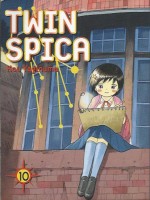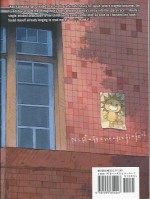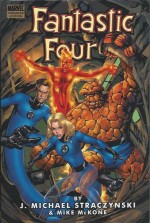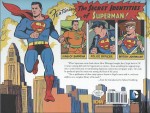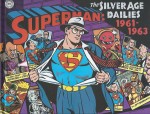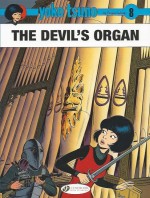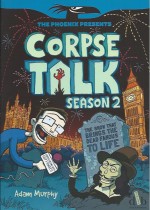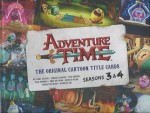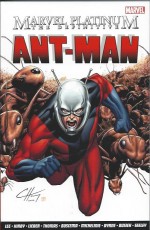
By Stan Lee, Larry Lieber, Roy Thomas, David Michelinie, Kurt Busiek, Robert Kirkman, Tim Seeley, Nick Spencer, Jack Kirby, John Buscema, John Byrne, Jerry Bingham, Ivan Reis, Phil Hester, Ramon Rosanas & various (Marvel/Panini UK)
ISBN: 978-1-84653-658-8
With another Marvel filmic franchise setting records around the world, here’s a timely tie-in trade paperback collection designed to perfectly augment the cinematic exposure and cater to movie fans wanting to follow up with a comics experience.
Part of the always-enticing Marvel Platinum/Definitive Edition series, this treasury of tales reprints intriguing landmarks and key moments from Tales to Astonish #27, 35, Avengers #59-60, Marvel Premiere #47-48, Marvel Team-Up #103, Avengers Annual 2001, #1, Irredeemable Ant-Man #1-2, Ant-Man and Wasp #1-3 and Ant-Man #1, convolutedly spanning January 1962 to March 2015, and hopefully answering any questions the silver screen saga might throw up whilst providing an immense amount of spectacularly bombastic fighting fun.
One thing to recall at all times however is that there are numerous distinct and separate iterations of the tiny terror and whilst the film concentrates on the first and second there are a few more here to tantalise and tempt you, so pay close attention…
Moreover, in addition to the sparkling Brady Webb Foreword, this compendium contains text features detailing the secret history and statistics of three of those Ant Men: Hank Pym, Scott Lang and the infamous Eric O’Grady, plus Mike Conroy’s scholarly trawl through comicbook history in ‘The True Origin of the Ant-Man’.
The unlikeliest of heroic titans debuted in Tales to Astonish #27, released at the end of 1961, one month after Fantastic Four #1 hit the newsstands: a 7-page short which introduced maverick scientist Dr Henry Pym, who discovered a shrinking potion and became ‘The Man in the Anthill!’
Overwhelmed and imperilled by his startling discovering, the lonely researcher found wonder and even a kind of companionship amongst the lowliest creatures on Earth… and under it…
This engaging piece of fluff, which owed much to classic Sci Fi movie The Incredible Shrinking Man was plotted by Stan Lee, scripted by Larry Lieber and stunningly illustrated by Jack Kirby & Dick Ayers: intended as nothing more than another here-today, gone-tomorrow filler in one of the company’s madly engaging pre-superhero “monster-magsâ€.
However the character struck a chord with someone since, as the DC Comics-inspired superhero boom flourished and Lee sprung the Hulk, Thor and Spider-Man on the unsuspecting kids of America, Pym was economically retooled as a fully-fledged costumed do-gooder for TtA #35 (September 1962).
The anthology title began featuring a new costumed champion as ‘The Return of the Ant-Man’ by Lee, Lieber, Kirby & Ayers found Soviet agents (this was at the height of Marvel’s ‘Commie-Buster’ period when every other villain was a Red somebody or other and rampaging socialism was a cultural bête noir) capturing Pym and holding him prisoner in his own laboratory.
Forced to use his long-abandoned shrinking gases and the cybernetic devices he’d built to communicate with ants, the scientist soundly trounced the spies and resolved to use his new-found powers for the good of Mankind.
Pym’s costumed exploits – shared with girlfriend Janet Van Dyne after his brilliance gave her powers as the Wasp from #44 onwards and expanded once he became Giant Man in #49 – ran until issue #69 (July 1965) whereupon he was impudently and unceremoniously ousted in favour of the Sub-Mariner. Thereafter he gradually migrated to the Earth’s Mightiest Heroes, changing his battle-nomenclature to Goliath.
That changed again in Avengers volume 1, #59 and 60 (December 1968 and January 1969) where, thanks to increasing mental instability and overwork, his team-mates were astounded to discover ‘The Name is Yellowjacket!’
Scripted by Roy Thomas and illustrated by John Buscema & George Klein, the tale saw Goliath and the Wasp finally marry under the most dubious of circumstances after heroic Dr. Pym was seemingly murdered and replaced by a new insect-themed hero with an edgy ruthlessly brutal character and far fewer morals…
Packed with heroic guest-stars and the deadly Circus of Evil in attendance, the nuptial tale concluded in ‘…Till Death Do Us Part!’ (inked by Mike Esposito moonlighting as Mickey DeMeo) with some semblance of sanity and normality at last restored.
Next up here is the introduction of reformed thief Scott Lang who debuted in Marvel Premiere #47 (April 1979, David Michelinie, John Byrne & Bob Layton) with ‘To Steal an Ant-Man!’ revealing how a former electronics engineer had turned to crime, more out of boredom than necessity, and after being caught and serving his time joined Stark Industries as a determinedly reformed character… until his daughter Cassie developed a heart condition which wiped out his savings forcing Scott to revert to old ways to save her.
He was desperate to find the wherewithal to hire experimental surgeon Dr. Erica Sondheim and began casing likely prospects, but unfortunately she had been abducted by merciless industrialist Darren Cross who was currently using all the resources of his mega-corporation Cross Technological Enterprises to keep himself alive…
Needing cash now just to broach the CTE complex, Lang went back to Plan A and burgled the lab of retired superhero Henry Pym, where he discovered old Ant-Man gear and size-changing gases. In a moment of madness Lang decided not to sell the stolen tech but instead used the outfit to break in to Cross’ citadel and rescue Sondheim…
That plan wasn’t so great either as the dying billionaire, in a desperate attempt to stay alive, had been harvesting the hearts of homeless people to power an experimental device which had mutated him into a monstrous brute. After learning with horror ‘The Price of a Heart!‘ (June 1979), Scott eventually triumphed; unaware until the very last that Pym had allowed him to take the suit and was backstopping him every inch of the way. With Cassie saved Yellowjacket then invited Lang to continue as the new Ant-Man…
After guest shots in The Avengers and Iron Man (not included here) Lang resurfaced for a spectacular clash against villainous lifestyle coach Taskmaster in Marvel Team-Up #103 (March 1983). Crafted by Michelinie, Jerry Bingham & Esposito ‘The Assassin Academy’ saw the diminutive neophyte hero save Spider-Man from becoming an object lesson for the graduating class at a deadly school for henchmen, after which we jump to the Avengers Annual (September) 2001, where Kurt Busiek, Ivan Reis & Scott Hanna cleared up a long-running case of doppelganger confusion…
Ever since the Avengers reunited following the end of the Onslaught publishing event Pym had been acting strangely: switching between Giant-Man and Yellowjacket personas and suffering bizarre mood-swings. Now it was revealed that his powers had caused the separation and manifestation of two discrete and antagonistic entities and it took the intervention of an insidious enemy and ‘The Third Man’ to put things right…
Clearly a character-concept with a lot of cachet and potential but no direction, the size-shifting stalwart underwent a radical revision in Irredeemable Ant-Man #1-2 (from December 2005 and January 2006) as the art team of Phil Hester & Ande Parks joined innovative scripter by Robert Kirkman in a sharp, snappy and gloriously irreverent reinterpretation.
When veteran Doctor Pym designed a new super suit, tricked up with loads of gadgets and capable of shrinking the wearer to ant-size, he did it under the auspices of super-spy organisation SHIELD. However, he didn’t expect it to be accidentally stolen by the security men guarding it – but then again nobody imagined such a prestigious, efficient organisation could employ such worthless, shiftless, useless slackers as trainee agents Eric O’Grady and Chris McCarthy.
When, after a series of improbable mishaps McCarthy put on the suit and was trapped and lost at ant size aboard the Helicarrier, Eric was too scared to admit it was a foul-up and not enemy action.
Later when a genuine crisis occurs, a horrific tragedy leaves the shrinking suit in O’Grady’s so-very unworthy hands and he resolves to try and make amends. Sadly Eric is an inveterate rat-bag and finds the temptation to use his new-found gift to spy on the women’s showers, cash in, score with chicks he rescues and generally act like a selfish ass too great to resist….
When Janet Van Dyne fell during the Skrulls’ Secret Invasion her estranged husband rededicated himself to heroic endeavour and took her codename as his own, leading his own cadre of Mighty Avengers as Earth’s Scientist Supreme. From that period comes the 3-part Limited Series Ant-Man and Wasp #1 (January-March 2011) wherein Tim Seeley & Hector Olazaba team the po-faced über-technologist with well-intentioned, weak-willed costumed Frat-Boy Eric O’Grady in a guest-star stuffed, trans-dimensional battle against AIM supremo Monica Rappacini and a rogue sleepwalker from the dream-drenched Mindscape to save a stolen virtual construct of the afterlife…
Wrapping up the eenie-weenie excitement comes Ant-Man #1 from March 2015 which reboots back-from-the-dead Scott Lang as a down on his luck, impoverished hero seeking to rebuild his life as a security officer for Stark Industries. This is a smart, engaging tale by Nick Spencer & Ramon Rosanas was released as a 5-part miniseries but as only the first chapter is included here I’m saying nothing more since I’m going to review the complete story in its own compilation in a few days time…
With covers by Kirby, Ayers, John Buscema, Bob Layton, Dave Cockrum & Bob McLeod, Bingham, Ian Churchill & Norm Rapmund, Hester, Salvador Espin and Mark Brooks, this quirky slice of up-scaled and down-sized derring-do is a non-stop feast of tense suspense, whacky fun and blockbuster action: another well-tailored, on-target tool to turn curious movie-goers into fans of the comic incarnation and another solid sampling to entice the newcomers and charm even the most jaded slice ‘n’ dice fanatic.
© 1962, 1968, 1969, 1979, 1981, 2001, 2006, 2007, 2011, 2015 Marvel & Subs. Licensed by Marvel Characters B.V. through Panini S.p.A. All rights reserved. British edition published by Panini UK.

